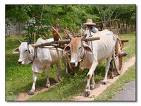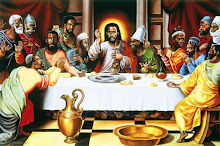









Tibor Sekelj
Tibor Sekelj (in Hungarian: Székely Tibor) (14 February 1912 – 23 September 1988) was an explorer, esperantist, writer and lawyer of Jewish descent. He was born in Spišská Sobota, Poprad, former-day Austria-Hungary, present-day Slovakia, and died in Subotica, former Yugoslavia. Tibor made expeditions across the whole of south America, Asia and Africa. Beside Hungarian and Croatian, he spoke German, Spanish, English, French and Esperanto. He was a member of the Academy of Esperanto and an honorary member of the World Esperanto Association, writing several books (essays and novels) in that language. His Kumeŭaŭa, la filo de la ĝangalo ("Kumeŭaŭa, the son of the jungle"), a children's book about the life of Brazilian Indians, has been translated into many languages. The Tibor's father was a veterinarian and the family moved around a lot. Several months after his birth the family of Tibor moved to Čenej Vojvodina and in 1922 they moved to Kikinda (Кикинда) in Vojvodina, Serbia. After he had finished elementary school there, the family moved to Nikšić (Никшић), Montenegro, where he finished high school (gymnasium). He went to Zagreb where he studied law. Later on he worked as a journalist in Zagreb. In 1939 he travelled to Argentina to report on Yugoslavia emigrants. He stayed there for the next 15 years as a journalist and explorer. In 1944 he climbed mount Aconcagua, the highest summit of the South American continent. This experience inspired him to write his first work Storm on the Aconcagua. He returned to Yugoslavia in 1954 and lived in Belgrade, although he still traveled a lot. He married Erzsébet Sekelj, a girl he met on a journey through Hungary.[citation needed] From 1972 he lived in Subotica, Vojvodina. He was in charge of a museum in Subotica for the rest of his life. He died in Subotica, and is buried there.
Works
The works of Tibor Sekelj, novels and recordings of his travels, contain interesting ethnographic observations. He also wrote guides and essays on Esperanto, the international language. The majority of his books were originally written in Esperanto, but were translated into many national languages. Tibor Sekelj is undoubtedly the most often translated Esperanto author.
Descriptions of travels
Tempestad sobre el Aconcagua, novel about his expedition in the Argentinian massif of the Aconcagua, originally written in Spanish, Buenos Aires: Ediciones Peuser, 1944, 274 pages.
Oluja na Aconcagui i godinu dana kasnije, Serbo-Croatian translation by Ivo Večeřina, Zagreb 1955, 183 pages.
Burka na Aconcagui, Czech-Slovakian translation by Eduard V. Tvarožek, Martin: Osveta, 1958, 149 pages.
Tempesto super Akonkagvo, translation in Esperanto by Enio Hugo Garrote, Belgrade: Serbio Esperanto-Ligo, 1959, 227 pages.
Por tierras de Indios, about the experiences of the author under the Indians in Brazil, originally written in Spanish, 1946.
Durch Brasiliens Urwälder zu wilden Indianerstämmen, German translation by Rodolfo Simon, Zürich: Orell Füssli, 1950, 210 pages.
Pralesmi Brazílie, tchec translation by Matilda V. Husárová, Martin: Osveta, 1956, 161 pages.
V dezeli Indijancev po brazilskih rekah gozdovih, Slovenian translation by Peter Kovacic, Maribor: Zalozba obzorja Maribor, 1966, 252 pages.
Tra lando de indianoj, translation in Esperanto by Ernesto Sonnenfeld, Malmö: Eldona Societo Esperanto, 1970, 186 pages.
Excursión a los indios del Araguaia (Brasil), about the Indians Karajá and Javaé in Brazil, in Spanish, 1948.
Nepalo malfermas la pordon, originally written in Esperanto, La Laguna: Régulo, 1959, 212 pages.
Nepla otvara vrata, Serbian translation by Antonije Sekelj, Belgrad 1959, 212 pages.
Window on Nepal, English translation by Marjorie Boulton, London: Robert Hale, 1959, 190 pages.
Nepal odpira vrata, Slovenian translation by Boris Grabnar, Ljubljana: Mladinska knjiga, 1960, 212 pages.
Ĝambo rafiki. La karavano de amikeco tra Afriko, originally written in Esperanto, Pise: Edistudio, 1991, 173 pages, ISBN 88-7036-041-5.
Djambo rafiki. Pot karavane prijateljstva po Afriki, Slovenian translation by Tita Skerlj-Sojar, Ljubljana: Mladinska knjiga, 1965, 184 pages.
Ridu per Esperanto, Zagreb 1973, 55 pages.
Premiitaj kaj aliaj noveloj, seven short novels, originally written in Esperanto, Zagreb: Internacia Kultura Servo, 1974, 52 pages.
Kumeŭaŭa, la filo de la ĝangalo, children's book about the life of Indians in Brazil, originally written in Esperanto.
1st edition Antwerp 1979.
2nd edition Rotterdam: UEA, 1994, 94 pages.
Kumeuaua djungels son, Swedish translation by Leif Nordenstorm, Boden 1987, 68 pages.
Kumevava, az őserdő fia, Hungarian translation by István Ertl, Budapest, 1988.
Kumevava, syn ĝunhliv, Ukrainian translation by Nadija Hordijenko Andrianova, Kijivo, Veselka, 1989.
Kumevava, sin prašume, Serbian translation, 2003.
Mondo de travivaĵoj, autobiography and adventures throughout five continents. Pise: Edistudio, 1-a eldono 1981, 2-a eldono 1990, 284 pages, ISBN 8870360121.
Neĝhomo, story about the life during an ascension Vienna: Pro Esperanto 1988, 20 pages.
Kolektanto de ĉielarkoj, novels and poems, originally written in Esperanto, Pise: Edistudio, 1992, 117 pages, ISBN 88-7036-052-0.
Temuĝino, la filo de la stepo, novel for the young, translated from Serbian by Tereza Kapista, Belgrade 1993, 68 pages, ISBN 8690107347.
Books about Esperanto
La importancia del idioma internacional en la educacion para un mundo mejor, Mexico: Meksika Esperanto-Federacio, 1953, 13 pages.
The international language Esperanto, common language for Africa, common language for the world, translated from Esperanto to English by John Christopher Wells, Rotterdam: UEA, 1962, 11 pages.
Le problème linguistique au sein du mouvement des pays non alignés et la possibilité de le resoudre, Rotterdam: UEA, 1981, 16 pages (= Esperanto-dokumentoj 10).
La lingva problemo de la Movado de Nealiancitaj Landoj - kaj gia ebla solvo, Rotterdam: UEA, 1981, 12 pages (= Esperanto-dokumentoj 13).
Manuals of Esperanto
La trovita feliĉo, novel for children, Buenos Aires: Progreso, 1945.
with Antonije Sekelj: Kurso de Esperanto, laŭ aŭdvida struktura metodo, 1960, 48 pages.
with Antonije Sekelj: Dopisni tečaj Esperanta, Belgrad: Serba Esperanto-Ligo, 1960, 63 pages.
Works of ethnography
During his travels in South America, Africa, Asia and Oceania he collected important ethnographic information which he gave to the Ethnographic Museum of Zagreb.
His principal ethnographic work is:
Elpafu la sagon, el la buŝa poezio de la mondo (Pull out the arrow, about oral poetry of the world ), Roterdamo: UEA, 1983, 187 paĝoj, ISBN 92-9017-025-5 (= Serio Oriento-Okcidento 18),
Dictionary
Tibor Sekelj collaborated on a dictionary in 20 languages about museology, Dictionarium Museologicum, appearing in 1986.



















































